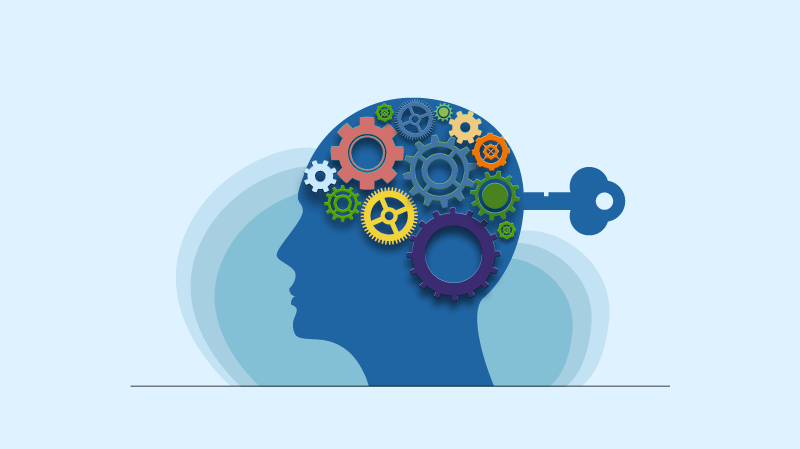Hello!
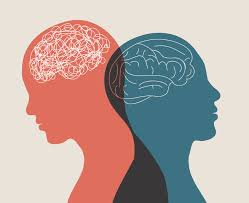 Cognitive Behavioral Therapy (CBT) techniques is a form of psychotherapy that has been shown to be effective in treating a variety of mental health conditions, including anxiety, depression, and post-traumatic stress disorder (PTSD).
Cognitive Behavioral Therapy (CBT) techniques is a form of psychotherapy that has been shown to be effective in treating a variety of mental health conditions, including anxiety, depression, and post-traumatic stress disorder (PTSD).
CBT techniques are based on the idea that our thoughts, feelings, and behaviors are interconnected and that by changing one of these components, we can change the others in cbt therapy techniques.
In this article, we’ll explore what CBT is, how it works, and some of the cbt techniques used in this form of therapy.
What is Cognitive Behavioral Therapy(CBT)?
Cognitive Behavioral Therapy (CBT) techniques is a form of psychotherapy that focuses on the connections between our thoughts, feelings, and behaviors. The theory behind CBT is that by changing our thoughts or behaviors, we can change how we feel. CBT techniques have been shown to be effective in treating a wide range of mental health conditions, including anxiety disorders, depression, and post-traumatic stress disorder (PTSD).
How does Cognitive Behavioral Therapy(CBT) work?
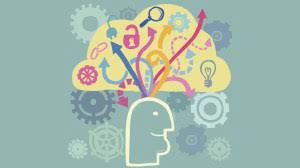 CBT works by helping individuals identify negative or inaccurate thoughts and beliefs, and replace them with more positive and accurate ones. CBT therapists also help individuals develop coping strategies for dealing with negative emotions and behaviors.
CBT works by helping individuals identify negative or inaccurate thoughts and beliefs, and replace them with more positive and accurate ones. CBT therapists also help individuals develop coping strategies for dealing with negative emotions and behaviors.
CBT techniques, or cognitive-behavioral therapy, work by helping individuals identify and change negative patterns of thinking and behavior that contribute to mental health conditions such as anxiety, depression, cbt therapy techniques, and PTSD.
 During CBT techniques sessions, a therapist will work with the individual to identify specific thoughts and behaviors that are causing distress and help them develop new coping strategies and ways of thinking. This might involve challenging negative thought patterns, practicing relaxation techniques, and developing a plan for managing difficult emotions.
During CBT techniques sessions, a therapist will work with the individual to identify specific thoughts and behaviors that are causing distress and help them develop new coping strategies and ways of thinking. This might involve challenging negative thought patterns, practicing relaxation techniques, and developing a plan for managing difficult emotions.
- CBT is a form of therapy that helps individuals identify and change negative patterns of thinking and behavior that contribute to mental health conditions such as anxiety, depression, and PTSD.
- During CBT sessions, a therapist works collaboratively with the individual to identify specific thoughts and behaviors that are causing distress.
- The therapist helps the individual develop new coping strategies and ways of thinking. This might involve challenging negative thought patterns, practicing relaxation techniques, and developing a plan for managing difficult emotions.
- CBT is typically a short-term form of therapy, with sessions lasting anywhere from a few weeks to several months depending on the individual’s needs.
- One of the key strengths of CBT techniques is its focus on the present moment, and on practical strategies that can be implemented immediately.
- By helping individuals identify and change negative patterns of thinking and behavior, CBT can provide lasting benefits for mental health and well-being.
Overall, CBT techniques is a highly collaborative and practical form of therapy that helps individuals take control of their mental health and develop lasting coping strategies.
What Conditions Can Cognitive Behavioral Therapy (CBT) Treat?
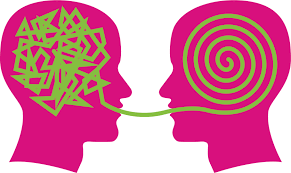 Cognitive-behavioral therapy (CBT) is a highly effective form of treatment for a wide range of mental health conditions. Some of the most common conditions that CBT can help treat include:
Cognitive-behavioral therapy (CBT) is a highly effective form of treatment for a wide range of mental health conditions. Some of the most common conditions that CBT can help treat include:
- Anxiety disorders, including generalized anxiety disorder, panic disorder, and phobias.
- Depression and other mood disorders, including bipolar disorder.
- Post-traumatic stress disorder (PTSD) and other trauma-related conditions.
- Obsessive-compulsive disorder (OCD) and other obsessive-compulsive spectrum disorders.
- Eating disorders, including anorexia nervosa, bulimia nervosa, and binge eating disorder.
- Substance use disorders, including addiction to drugs or alcohol.
- Insomnia and other sleep disorders.
- Attention-deficit/hyperactivity disorder (ADHD) and other attention-related disorders.
- Chronic pain and other physical health conditions with a significant psychological component.
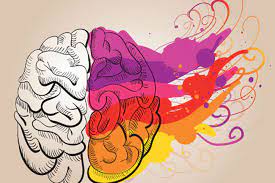 CBT techniques have been shown to be particularly effective in treating anxiety disorders and depression and are often recommended as a first-line treatment for these conditions.
CBT techniques have been shown to be particularly effective in treating anxiety disorders and depression and are often recommended as a first-line treatment for these conditions.
However, it can be helpful for many different mental health conditions, either as a standalone treatment or as part of a larger treatment plan.
If you’re struggling with a mental health condition, it’s important to speak with a qualified mental health professional to determine the best course of treatment for your specific needs to cbt therapy techniques.
What are The Pros and Cons of Cognitive Behavioral Therapy (CBT)?
 Cognitive-behavioral therapy (CBT) is a highly effective form of therapy for treating a wide range of mental health conditions. As with any form of treatment, there are both pros and cons to CBT techniques. Here are some of the most common:
Cognitive-behavioral therapy (CBT) is a highly effective form of therapy for treating a wide range of mental health conditions. As with any form of treatment, there are both pros and cons to CBT techniques. Here are some of the most common:
Pros of CBT:
- Highly effective: CBT has been shown to be highly effective in treating a wide range of mental health conditions, including anxiety disorders, depression, and PTSD.
- Time-limited: CBT is typically a time-limited form of therapy, with sessions lasting anywhere from a few weeks to several months. This can make it a more accessible form of treatment for individuals who are unable to commit to long-term therapy.
- Focus on practical strategies: CBT techniques is a highly practical form of therapy, with a strong emphasis on developing practical coping strategies that can be implemented immediately.
- Collaborative: CBT is a highly collaborative form of therapy, with a focus on building a strong therapeutic relationship between the individual and the therapist.
- Adaptable: CBT can be adapted to meet the needs of individuals with different mental health conditions and backgrounds.
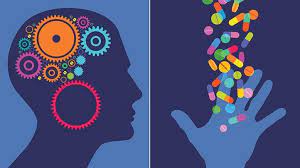
Cons of CBT:
- Time commitment: Although CBT is typically a time-limited form of therapy, it still requires a significant time commitment in order to be effective.
- May not be suitable for everyone: While CBT can be highly effective for many individuals, it may not be suitable for everyone. Some individuals may require a different form of therapy or a combination of different therapies.
- Can be emotionally challenging: CBT can be emotionally challenging, as it often involves confronting difficult thoughts and emotions.
- Requires active participation: CBT requires active participation from the individual, and may not be suitable for individuals who are unwilling or unable to actively participate in therapy.
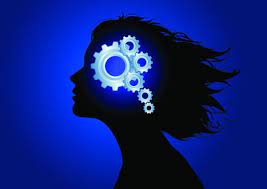 Overall, CBT techniques are a highly effective form of therapy with many benefits, but they may not be suitable for everyone. It’s important to speak with a qualified mental health professional to determine if cbt therapy techniques are the right form of treatment for your specific needs.
Overall, CBT techniques are a highly effective form of therapy with many benefits, but they may not be suitable for everyone. It’s important to speak with a qualified mental health professional to determine if cbt therapy techniques are the right form of treatment for your specific needs.
Techniques Used in CBT
Cognitive Restructuring
Cognitive restructuring is a technique used in CBT techniques to help individuals identify and change negative thought patterns. This technique involves identifying negative thoughts and beliefs and replacing them with more positive and accurate ones. Cognitive restructuring can be used to treat a variety of mental health conditions, including anxiety and depression.
Behavioral Activation
Behavioral activation is a technique used in CBT techniques to help individuals engage in positive activities that can improve their mood. This technique involves identifying activities that bring pleasure or a sense of accomplishment and incorporating them into one’s daily routine. Behavioral activation has been shown to be effective in treating depression.
Exposure Therapy
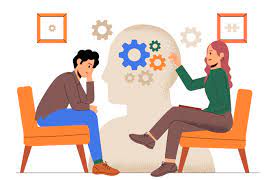 Exposure therapy is a technique used in CBT to help individuals confront their fears and anxieties. This technique involves gradually exposing individuals to the situations or objects that cause anxiety or fear, in a safe and controlled environment. Exposure therapy has been shown to be effective in treating anxiety disorders, including phobias and PTSD with cbt therapy techniques.
Exposure therapy is a technique used in CBT to help individuals confront their fears and anxieties. This technique involves gradually exposing individuals to the situations or objects that cause anxiety or fear, in a safe and controlled environment. Exposure therapy has been shown to be effective in treating anxiety disorders, including phobias and PTSD with cbt therapy techniques.
Relaxation Techniques
Relaxation techniques, such as deep breathing, progressive muscle relaxation, and meditation, are often used in CBT to help individuals reduce anxiety and stress. These techniques can be used on their own or in combination with other CBT techniques.
Mindfulness-Based CBT
Mindfulness-based CBT is a form of therapy that incorporates mindfulness meditation into traditional CBT techniques. This technique involves focusing on the present moment and accepting one’s thoughts and feelings without judgment. Mindfulness-based cognitive therapy techniques have been shown to be effective in treating depression, anxiety, and stress.
Cognitive Therapy Techniques Examples
 Cognitive therapy techniques are practical strategies used by mental health professionals to help individuals identify and change negative thought patterns and behaviors. Here are some examples of cognitive therapy techniques:
Cognitive therapy techniques are practical strategies used by mental health professionals to help individuals identify and change negative thought patterns and behaviors. Here are some examples of cognitive therapy techniques:
- Cognitive restructuring: This technique involves identifying and challenging negative thoughts and replacing them with more positive and realistic ones.
- Behavioral experiments: This technique involves testing negative beliefs through experiments to determine their accuracy and validity in cognitive therapy techniques.
- Mindfulness-based techniques: These techniques involve using mindfulness practices to develop a greater awareness of one’s thoughts and feelings, and to learn to observe them without judgment.
- Exposure therapy: This technique involves gradually exposing individuals to situations that they fear in a controlled and safe environment, in order to help them overcome their fears.
- Activity scheduling: This technique involves planning and scheduling enjoyable and fulfilling activities in order to improve mood and increase a sense of purpose.
- Relaxation techniques: These techniques, such as deep breathing exercises or progressive muscle relaxation, can help reduce anxiety and stress.
- Thought-stopping: This technique involves learning to recognize and stop negative thoughts as they arise, and replacing them with positive thoughts.
 These are just a few examples of the many cognitive therapy techniques that are used in therapy. A qualified mental health professional can help identify which techniques will be most effective for an individual’s specific needs.
These are just a few examples of the many cognitive therapy techniques that are used in therapy. A qualified mental health professional can help identify which techniques will be most effective for an individual’s specific needs.
Who can Benefit from Cognitive Behavioral Therapy(CBT)?
CBT techniques can benefit anyone who is struggling with a mental health condition, regardless of age or gender. CBT strategies have been shown to be effective in treating a wide range of mental health conditions, including anxiety disorders, depression, and PTSD.
Common Myths and Facts About CBT
 There are several myths about CBT techniques that can prevent people from seeking this form of therapy. Some common myths include:
There are several myths about CBT techniques that can prevent people from seeking this form of therapy. Some common myths include:
- Myth: CBT is only for people with severe mental illness.
- Fact: CBT can be helpful for anyone struggling with mental health issues, from mild to severe.
- Myth: CBT is just “positive thinking”.
- Fact: While CBT does focus on replacing negative thoughts with more positive ones, it is a complex form of therapy that involves several techniques and strategies.
- Myth: CBT strategy is a quick fix.
- Fact: CBT requires time and effort, and is most effective when done in conjunction with other forms of treatment, such as medication or support groups.
The Future of Cognitive Behavioral Therapy(CBT)
 CBT techniques are a constantly evolving field, with researchers and therapists developing new techniques and strategies for treating mental health conditions. Some emerging trends in CBT include:
CBT techniques are a constantly evolving field, with researchers and therapists developing new techniques and strategies for treating mental health conditions. Some emerging trends in CBT include:
- Online CBT programs: With the rise of telehealth, online CBT strategies programs are becoming more popular and accessible.
- Acceptance and Commitment Therapy (ACT): ACT is a form of CBT that focuses on accepting difficult thoughts and feelings, rather than trying to control or eliminate them.
- Cultural adaptations of CBT: CBT is being adapted to better serve diverse populations, taking into account cultural differences and beliefs.
Also read:
- Best Keyless Entry Solutions for Your Home
- Why Digital Communities Are A ‘Must’ For Your Business
- SEO for Real Estate Agents & Letting Agents
Conclusion
CBT techniques are a powerful form of therapy that can help individuals overcome a variety of mental health conditions. By focusing on the connections between our thoughts, feelings, and behaviors, CBT therapists can help individuals develop new coping strategies and improve their overall well-being. Whether you’re struggling with anxiety, depression, or PTSD, CBT may be an effective form of treatment for you.
Thank you!
Join us on social media!
See you!

